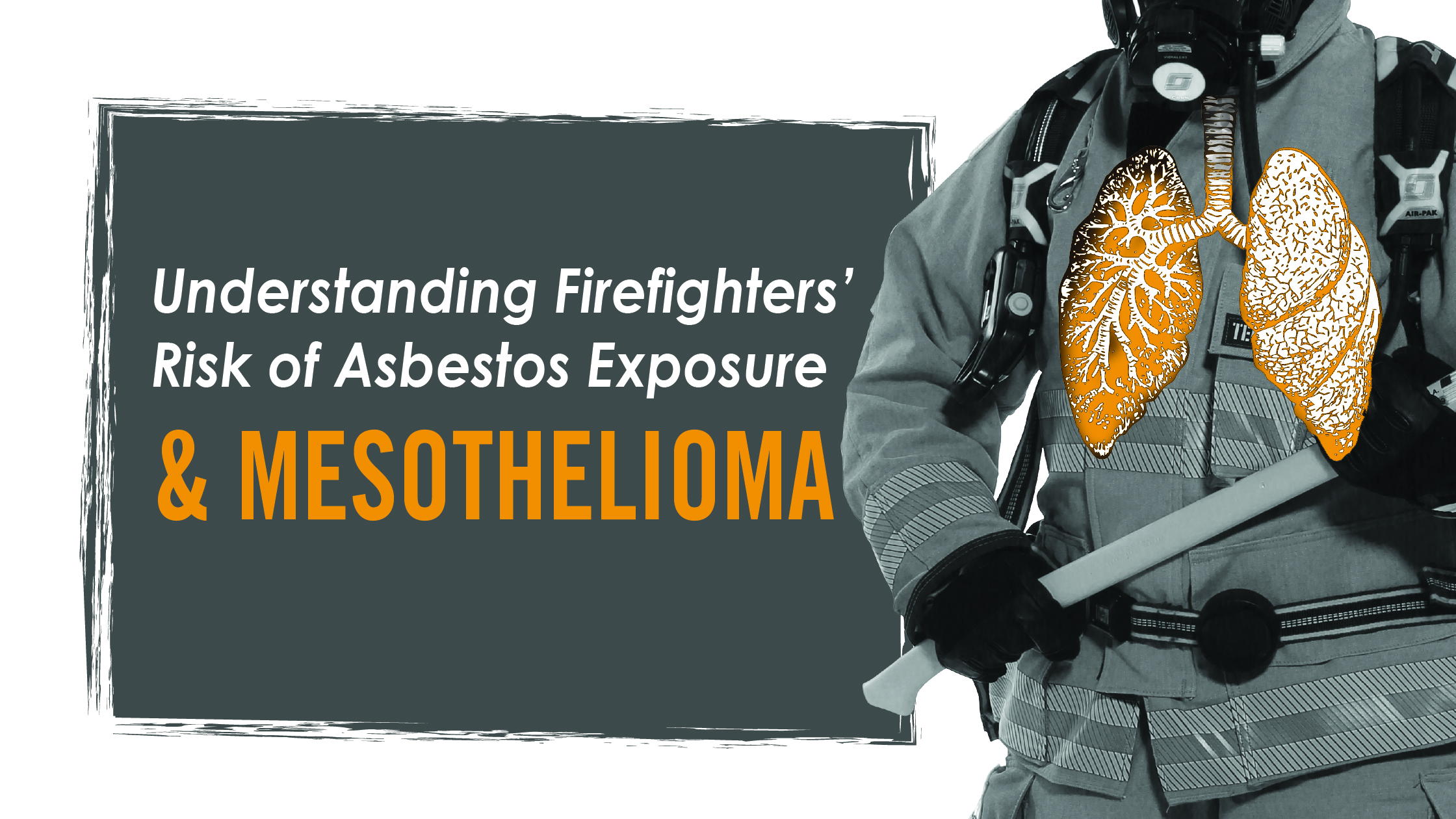Understanding the Dangers of the Job
When flames smolder and rise - as black smoke fills the blue sky; a noble few with courage and valor run toward the chaos. These heroes who we call firefighters pledge to take care of families in their community in the face of destruction. Firefighting is undoubtedly one of the most honorable professions, yet also one of the most inherently dangerous. Risks of burns, smoke inhalation, and building collapse are very real dangers dealt with on a daily basis. However, air pollution remains a serious threat to the lives of firefighters nationwide. Throughout the course of duty, firefighters have an increased likelihood of asbestos exposure, which can result in serious illness - including mesothelioma, a severe form of cancer.
What is Asbestos?
Asbestos is an organic compound that consists of naturally-occurring silicate crystals, which has been used for centuries as a building material. During the Industrial Revolution, asbestos was used extensively in construction, a practice that continued through much of the 20th century. The material was often used in building insulation, as well as in flooring, roofing and electrical applications. Known for its durability and fire resistance, asbestos was once viewed as a “super mineral,” until evidence of severe health effects began to emerge.
Doctors and healthcare professionals began to note a high incidence of mesothelioma due to asbestos exposure, which has resulted in bans of the substance across the globe. Studies show that 8 out of 10 people with mesothelioma have been exposed to asbestos. Unfortunately, the toxin is still legal in the United States, and is widely used in current industrializing countries such as Russia, China, Brazil and Kazakhstan.
How Can One Be Exposed?
While a firefighter’s SCBA will keep them protected from airborne particulate matter, the risk of exposure increases as the site of the fire begins to cool and debris is extinguished. While under duress from heat, asbestos material will begin to crack and fragment, releasing particles into the air.
- Face extreme risks of asbestos exposure during rescue operations
- 2.29 times more likely to develop mesothelioma due to exposure
- 70% of line-of-duty deaths are caused by cancer in general
- Proper training and procedures can prevent occupational cancer
That's why it's so important to wear particulate blocking hoods to defend against carcinogens and contaminants found in soot and smoke. Although asbestos’ fire resistance is noteworthy, it does not mean the substance is totally fireproof. The friability of the material is what makes it so deadly, the fibers of asbestos are inhaled or ingested and then may later become cancerous. The best form of prevention for any firefighter is vigilant usage of protective equipment, including proper respirators and ppe, even after the fire has been extinguished.
The particles that settle in the leftover debris after a fire has been contained, poses a threat to those working on any cleanup efforts. When choosing a particulate blocking hood, make sure you select one that offers 100% coverage throughout the entire hood like the H41 Interceptor hoods. These hoods can also be bundled within the Interceptor Package, the ultimate way to reduce your exposure to contaminants and lessen the chance of heat stress.
The Threat of Mesothelioma
Mesothelioma is an incredibly aggressive form of cancer that most commonly affects the lining of the lungs, and, in rarer cases, the lining of the abdominal cavity or heart. Many of the first signs and symptoms of mesothelioma are similar to those of other health problems, so people may ignore them for other minor ailments. Those with mesothelioma have symptoms for a few months prior to being diagnosed. Risk factors of Mesothelioma include:
- Environmental asbestos exposure
- Family history
- Gender & age
- Lifestyle (diet, smoking and other choices)
- Occupational asbestos exposure
- Secondhand exposure to asbestos
How to Stay Safe
A tremendous risk is assumed every time a firefighter straps on his or her helmet, but safety can be ensured through the correct precautions. Following proper decon procedures such as removing potentially-harmful contaminants from PPE during on-scene preliminary exposure reduction. Additionally, correct usage of equipment, wearing breathable particulate blocking hoods, and education on environmental hazards can help to alleviate certain dangers. These precautions will allow firefighters to continue to pursue and extinguish further blazes.
Our Commitment to Health & Safety
Fire-Dex is committed to developing health and safety solutions. Find out how our gear can help keep you and your department safe!







Leave a Reply